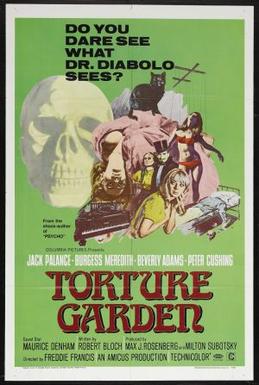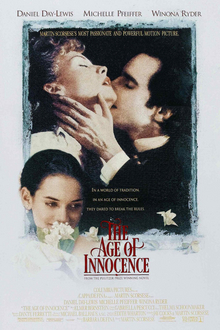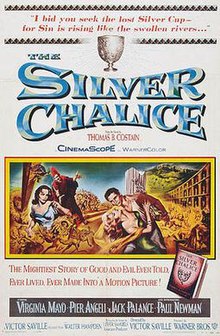
The Holy Grail is a treasure that serves as an important motif in Arthurian literature. Various traditions describe the Holy Grail as a cup, dish, or stone with miraculous healing powers, sometimes providing eternal youth or sustenance in infinite abundance, often guarded in the custody of the Fisher King and located in the hidden Grail castle. By analogy, any elusive object or goal of great significance may be perceived as a "holy grail" by those seeking such.

Paul Leonard Newman was an American actor, film director, racing driver, philanthropist, and entrepreneur. He was the recipient of numerous awards, including an Academy Award, a BAFTA Award, three Golden Globe Awards, a Screen Actors Guild Award, a Primetime Emmy Award, a Silver Bear, a Cannes Film Festival Award, and the Jean Hersholt Humanitarian Award.

Thomas Bertram Costain was a Canadian-American journalist who became a best-selling author of historical novels at the age of 57.

The Silver Chalice is a 1952 English language historical novel by Thomas B. Costain. It is the fictional story of the making of a silver chalice to hold the Holy Grail and includes 1st century biblical and historical figures: Luke, Joseph of Arimathea, Simon Magus and his companion Helena, and the apostle Peter.

Anna Maria Pierangeli, known internationally by the stage name Pier Angeli, was an Italian actress, model and singer. She won the Nastro d'Argento for Best Actress for her debut role in the 1950 film Tomorrow Is Too Late, and subsequently won a Golden Globe Award for New Star of the Year – Actress for her performance in the American film Teresa (1951).

Somebody Up There Likes Me is a 1956 American drama film directed by Robert Wise and starring Paul Newman and Pier Angeli, based on the life of middleweight boxing legend Rocky Graziano. The supporting cast features Everett Sloane, Eileen Heckart, Harold J. Stone, and Sal Mineo.

To Hell and Back is a Technicolor and CinemaScope war film released in 1955. It was directed by Jesse Hibbs and stars Audie Murphy as himself. It is based on the 1949 autobiography of the same name and is an account of Murphy's World War II experiences as a soldier in the U.S. Army. The book was ghostwritten by his friend, David "Spec" McClure, who served in the U.S. Army's Signal Corps during World War II.

Virginia Mayo was an American actress and dancer. She was in a series of popular comedy films with Danny Kaye and was Warner Bros. biggest box-office draw in the late 1940s. She also co-starred in the 1946 Oscar-winning movie The Best Years of Our Lives.

The Big Combo is a 1955 American crime film noir directed by Joseph H. Lewis, written by Philip Yordan and photographed by cinematographer John Alton, with music by David Raksin. The film stars Cornel Wilde, Richard Conte and Brian Donlevy, as well as Jean Wallace, who was Wilde's wife at the time. The supporting cast features Lee Van Cleef, Earl Holliman and the final screen appearance of actress Helen Walker.

Cat on a Hot Tin Roof is a 1958 American drama film directed by Richard Brooks, who co-wrote the screenplay with James Poe, based on the 1955 Pulitzer Prize-winning play of the same name by Tennessee Williams. The film stars Elizabeth Taylor, Paul Newman, Burl Ives, Jack Carson, and Judith Anderson.
Silver chalice may refer to:

Land of the Pharaohs is a 1955 American epic historical drama film in CinemaScope and WarnerColor from Warner Brothers, produced and directed by Howard Hawks. The cast was headed by Jack Hawkins as Pharaoh Khufu and Joan Collins as one of his wives, Nellifer. The film is a fictional account of the building of the Great Pyramid. Nobel Prize-winning novelist William Faulkner was one of the film's three credited screenwriters.

Walter Hampden Dougherty, known professionally as Walter Hampden, was an American actor and theatre manager. He was a major stage star on Broadway in New York who also made numerous television and film appearances.

Torture Garden is a 1967 British anthology horror film directed by Freddie Francis and starring Burgess Meredith, Jack Palance, Michael Ripper, Beverly Adams, Peter Cushing, Maurice Denham, Ursula Howells, Michael Bryant and Barbara Ewing. The score was a collaboration between Hammer horror regulars James Bernard and Don Banks.

The Age of Innocence is a 1993 American historical romantic drama film directed by Martin Scorsese. The screenplay, an adaptation of the 1920 novel of the same name by Edith Wharton, was written by Scorsese and Jay Cocks. The film stars Daniel Day-Lewis, Michelle Pfeiffer, Winona Ryder and Miriam Margolyes, and was released by Columbia Pictures. The film recounts the courtship and marriage of Newland Archer (Day-Lewis), a wealthy New York society attorney, to May Welland (Ryder); Archer then encounters and legally represents Countess Olenska (Pfeiffer) prior to unexpected romantic entanglements.

The Last Temptation of Christ is a 1988 epic religious drama film directed by Martin Scorsese. Written by Paul Schrader with uncredited rewrites from Scorsese and Jay Cocks, it is an adaptation of Nikos Kazantzakis' controversial 1955 novel of the same name. The film, starring Willem Dafoe, Harvey Keitel, Barbara Hershey, Andre Gregory, Harry Dean Stanton and David Bowie, was shot entirely in Morocco.

Anthony McCarten is a New Zealand writer and filmmaker. He is best known for writing big-budget biopics The Theory of Everything (2014), Darkest Hour (2017), Bohemian Rhapsody (2018), The Two Popes (2019), and Whitney Houston: I Wanna Dance with Somebody (2022). McCarten has been nominated for four Academy Awards, including twice for Best Adapted Screenplay, for The Theory of Everything and The Two Popes.

The Light Touch is a 1951 American crime drama film directed by Richard Brooks and starring Stewart Granger, Pier Angeli and George Sanders. It was produced and released by Metro Goldwyn Mayer.

Sombrero is a 1953 American musical romance film directed by Norman Foster and starring Ricardo Montalbán, Pier Angeli, Vittorio Gassman and Cyd Charisse.


















